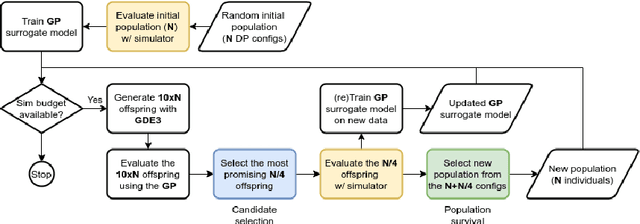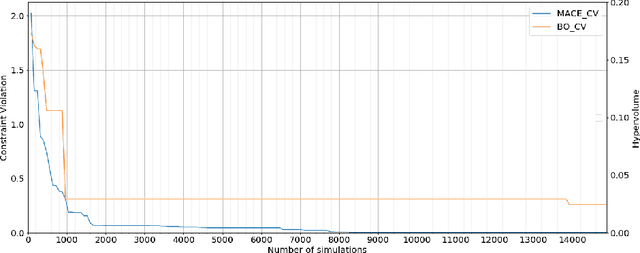Andi Buzo
Adaptive Planning Search Algorithm for Analog Circuit Verification
Jun 23, 2023


Abstract:Integrated circuit verification has gathered considerable interest in recent times. Since these circuits keep growing in complexity year by year, pre-Silicon (pre-SI) verification becomes ever more important, in order to ensure proper functionality. Thus, in order to reduce the time needed for manually verifying ICs, we propose a machine learning (ML) approach, which uses less simulations. This method relies on an initial evaluation set of operating condition configurations (OCCs), in order to train Gaussian process (GP) surrogate models. By using surrogate models, we can propose further, more difficult OCCs. Repeating this procedure for several iterations has shown better GP estimation of the circuit's responses, on both synthetic and real circuits, resulting in a better chance of finding the worst case, or even failures, for certain circuit responses. Thus, we show that the proposed approach is able to provide OCCs closer to the specifications for all circuits and identify a failure (specification violation) for one of the responses of a real circuit.
Automated Circuit Sizing with Multi-objective Optimization based on Differential Evolution and Bayesian Inference
Jun 06, 2022



Abstract:With the ever increasing complexity of specifications, manual sizing for analog circuits recently became very challenging. Especially for innovative, large-scale circuits designs, with tens of design variables, operating conditions and conflicting objectives to be optimized, design engineers spend many weeks, running time-consuming simulations, in their attempt at finding the right configuration. Recent years brought machine learning and optimization techniques to the field of analog circuits design, with evolutionary algorithms and Bayesian models showing good results for circuit sizing. In this context, we introduce a design optimization method based on Generalized Differential Evolution 3 (GDE3) and Gaussian Processes (GPs). The proposed method is able to perform sizing for complex circuits with a large number of design variables and many conflicting objectives to be optimized. While state-of-the-art methods reduce multi-objective problems to single-objective optimization and potentially induce a prior bias, we search directly over the multi-objective space using Pareto dominance and ensure that diverse solutions are provided to the designers to choose from. To the best of our knowledge, the proposed method is the first to specifically address the diversity of the solutions, while also focusing on minimizing the number of simulations required to reach feasible configurations. We evaluate the introduced method on two voltage regulators showing different levels of complexity and we highlight that the proposed innovative candidate selection method and survival policy leads to obtaining feasible solutions, with a high degree of diversity, much faster than with GDE3 or Bayesian Optimization-based algorithms.
 Add to Chrome
Add to Chrome Add to Firefox
Add to Firefox Add to Edge
Add to Edge